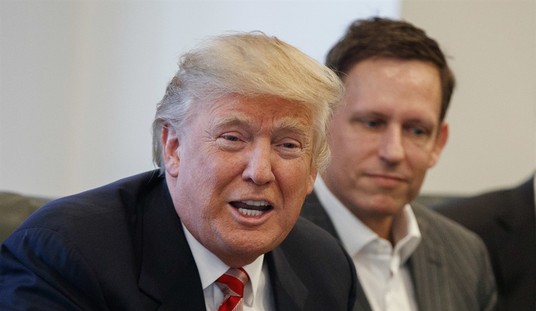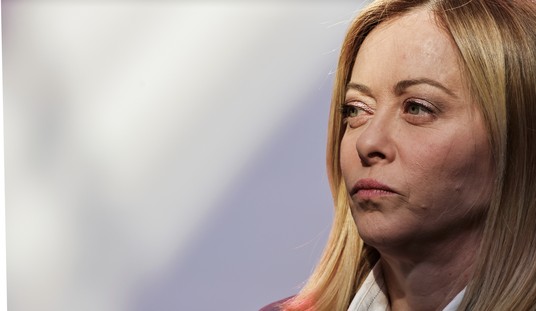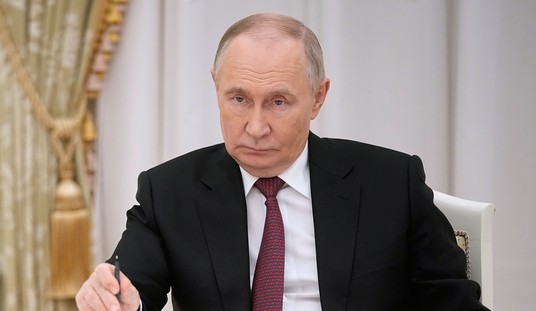Victoria Nuland’s name keeps popping up in connection with now discredited Russia-Trump collusion hoax, but is not receiving the attention she should. She is a former career State Department official who last held the position as Assistant Secretary of State for Europe and Eurasian Affairs. Originally hired in the Clinton Administration, she stayed on through the Bush years becoming deputy foreign policy adviser to Vice President Cheney. In 2013, the Obama administration elevated her the Assistant Secretary position after serving a stint as State Department spokesperson during Obama’s first term.
Her importance becomes apparent for two reasons. As we now know, much of the counterintelligence operations directed against Trump advisers occurred in Europe. They likewise involved many European actors like Stefan Halper, Alexander Downer (an Australian in London), Joseph Misfud and, of course, dossier author Christopher Steele. Running such an operation on US soil leads to quite obvious legal problems. As an Assistant Secretary of State for European Affairs, it would only seem logical that Nuland had firsthand knowledge of these events.
Second, from Nuland’s own public statements and Congressional testimony, we now know that she was relaying information up the chain of command, including then-Secretary of State John Kerry. It is inconceivable that Kerry, being privy to such information, did not relay this information even further up the chain of command to Obama himself.
Nuland loves to draw on her background and has described herself as “the Forrest Gump” of Russian politics. She was in Moscow when the Soviet Union disintegrated in 1991. Most importantly, she was quite instrumental in the 2014 coup that toppled the pro-Russian government of Viktor Yanukovych. She was considered the most hawkish of State Department officials in the Obama administration who believed Putin was attempting to resurrect the old Soviet Union and that the United States had to do everything in its power to thwart those efforts. Those efforts started in the Ukraine which eventually led to a coup that toppled the Yanukovych government and the State Department got their preferred leader in, Arseniy Yatsenyuk. Nuland has boasted how the United States invested over $5 billion over the years to have a pro-Western government in Ukraine.
But, her involvement did not end with engineering a successful coup in Ukraine that used, ironically, known neo-Nazi thugs to instigate demonstrations and violence in the streets. In early 2016, Ukrainian billionaire Victor Pinchuk enters the scene. Although never proven, Pinchuk is believed to have profited off the sale of state-owned assets at below-market costs because of political favoritism. In April 2016, Ukrainian Parliamentarian Olga Bielkov held meetings with Samuel Charap of the International Institute of Strategic Studies, Liz Zentos of the National Security Council, Michael Kimmage of the State Department, and David Kramer of the McCain Institute.
Democratic political operative, known for playing both sides of the aisle, Doug Schoen, had previously in 2012 set up meetings between Pinchuk and the Clinton Foundation. He also allegedly tried to arrange up to 72 meetings between members of Congress and the media with Bielkov. In the lead up to the Ukrainian coup, Schoen arranged meetings between Pinchuk and senior State Department officials to pressure Yanukovych to release political rival Yulia Tymoshenko from prison.
Previously, in 2013 the Kiev Post reported on an annual conference financed by Pinchuk called the Yalta European Strategy. The keynote speaker was Hillary Clinton. She and Bill had previously been paid by Pinchuk to attend the annual conference and it is also known that he has donated about $25 million to the Clinton Foundation over the years.
Post-Ukrainian coup, again engineered by Nuland, it was revealed that Pinchuk is on the board of directors of the Atlantic Counsel, a NATO-aligned think tank. This group has been very active in the Ukraine through their Ukraine in Europe Initiative. In early 2017, they announced a partnership with Ukrainian energy giant Burisma.
Now, let’s go back to those days of the Ukrainian coup. On February 4, 2014, US Ambassador to Ukraine, Geoffrey Pyatt, and Nuland held a telephone conversation discussing the removal of Yanukovych and the installation of Yatsenyuk. About two weeks later, the coup succeeds and Yanukovych is removed from office and replaced by Yatsenyuk five days later. In April, 2014, Hunter Biden is named to the board of Burisma. Four days later, Vice President Joe Biden travels to the Ukraine and pledges $50 million in aid for Yatsenyuk’s shaky new government. Incidentally, Yatsenyuk was removed from office in 2016 in a corruption scandal.
First, it should be noted that Nuland is this alleged expert on European and Russian affairs. In her and the State Department’s zeal to remove Yanukovych, they obviously did not do a good job in vetting his replacement. Simply installing a pro-Western government in Kiev was their easiest task and like Libya beforehand, they failed to consider the consequences fully. Those consequences were the installation of a corrupt government that lasted about two years, Russian annexation of the Crimea, and further Russian dalliance in eastern Ukraine. Expecting to thwart Putin’s designs on the Ukraine and the rest of the former Soviet Union, they instead emboldened him.
Getting back to that Atlantic Counsel with Pinchuk on their advisory board, there were, at the time, some other interesting members. First is Dinitriy Alperovich. He is or was the CEO of Crowdstrike, the cybersecurity firm the DNC hired to investigate the hacking of their system and the same DNC that refused to allow the FBI to independently examine their servers. Another member at the time was James Clapper, Obama’s Director of National Intelligence. A non-resident senior fellow was State Department official Evelyn Farkas who said in a 2017 interview that the Obama State Department had intelligence information on alleged Trump-Russia ties. Although they shared the information within the administration, they failed to share any information with the Trump campaign or transition for fear Trump would disclose sources and methods (where have we heard that before?). Farkas was, at the time, Deputy Assistant Secretary of Defense for Russia/Ukraine/Eurasia.
Hence, we have all this sharing of intelligence between the IC, State Department, apparently the Department of Defense, and the FBI later. Which brings us to Nuland again and the role of the infamous dossier. According to Nuland, in 2014 and 2015, Christopher Steele was providing information to the State Department about what was going on in the Ukraine and Russia. This information, not unusual to use third parties, was relayed to the State Department through Jonathan Winer, the former special envoy to Libya and counsel to John Kerry. Steele and Winer were apparent friends. She further stated that in mid-July 2016, Steele (through Winer) passed on information regarding Trump’s alleged ties to Russia. According to Nuland, this raised serious questions and she suggested the information be relayed to the FBI if the Russian Federation was really trying to influence an election.
Steele had somewhat of a reputation in the State Department. His work helped secure the indictments of 14 people in the United States in connection with the FIFA World Cup corruption scandal. At the time, London and Moscow had been vying for the World Cup. In addition to this work and his previous work on Ukrainian-Russian politics and relations, the State Department took these series of memos as gospel (the first “pages” of the dossier) without vetting further. This, however, is no excuse for the State Department, especially in light of what was being alleged. It is unknown if anyone at the State Department was aware that Steele was being paid by Fusion GPS to dig up political dirt on Trump. If they had, Nuland’s self-described “spidey sense” should have been raised, but given her documented qualms regarding Trump (she believed he was out to destroy NATO, for one thing), one doubts she would have cared if she had known.
So, Nuland comes into possession of some of the Steele dossier and passes it onto the FBI in mid-July 2016. About this same time, Susan Rice begins showing an unusual interest in NSA intelligence, including unmasked American identities. This coincides with the time Trump secured the GOP nomination at the Cleveland convention, and her interest only got stronger as the general election campaign dragged on up to the point of Trump’s inauguration.
Her account contradicts another account regarding the Steele dossier. In this account, the FBI received the dossier directly from Christopher Steele on July 5, 2016 in Europe. It was during a meeting between FBI European liaison Mike Gaeta and Steele. That direct meeting had to be approved by Nuland herself. It seems strange that information so incredible from a supposed credible source would reach FBI operative Peter Strozk weeks after the Steele-Gaeta meeting. By July 20, 2016, Comey had seen the documents and Strozk had it in his possession.
Both of these renditions contradict a third version of events, that of Jonathan Winer. These are Winer’s very words in a Washington Post op-ed:
In September 2016, Steele and I met in Washington and discussed the information now known as the “dossier.” Steele’s sources suggested that the Kremlin not only had been behind the hacking of the Democratic National Committee and the Hillary Clinton campaign but also had compromised Trump and developed ties with his associates and campaign.
I was allowed to review, but not to keep, a copy of these reports to enable me to alert the State Department. I prepared a two-page summary and shared it with Nuland, who indicated that, like me, she felt that the secretary of state [John Kerry] needed to be made aware of this material. [Emphasis mine]
In this rendition of events, the State Department came into possession, or at least a summary of the Steele dossier, in September, 2016 and that it was then turned over Nuland and up the chain to Kerry. So was it July 5, 2016, mid-July 2016, or September 2016?
But Nuland’s efforts did not stop there. In the days before Trump’s inauguration, she was instrumental, proven through a series of texts and email messages, in getting the Trump-Russia narrative into the hands of Congressional leaders. The top three among them were Mark Warner (D-VA), Ben Cardin (D-MD), and Tom Corker (R-TN). In short, Nuland was frantically trying to disseminate intelligence of dubious quality and pass it off as credible to key members of Congress to further the narrative. She is a key figure in the Strozk/Page “insurance policy.”
One would like to think that Nuland was acting with good intentions. Perhaps, having been a former envoy to NATO, she believed Trump was an existential threat to the organization. Maybe she truly believed that it was not outside the bounds of logic to think Putin would attempt to influence an American election so boldly as favoring Trump over Clinton. By the same token, it is incredulous to believe that a 32-year official in the State Department would rely on an obvious piece of political opposition research as bona fide intelligence. Apparently, her “spidey sense” was not working too well from at least July, 2016 to January 20, 2017. The reason is quite obvious: she opposed Trump.
Nuland was not acting out of some sense of patriotism; quite the opposite. From 2013 on, she was instrumental in (1) the Ukrainian coup (talk about interference in elections!), (2) setting up sweetheart deals for the son of a sitting Vice-President, (3) approving the Gaeta-Steele meeting in Europe (Rome and London), (4) receiving and treating as gospel the Steele dossier, and (5) furthering the collusion narrative by disseminating intelligence to members of Congress in a last-ditch, frantic effort to tarnish Trump.














Join the conversation as a VIP Member